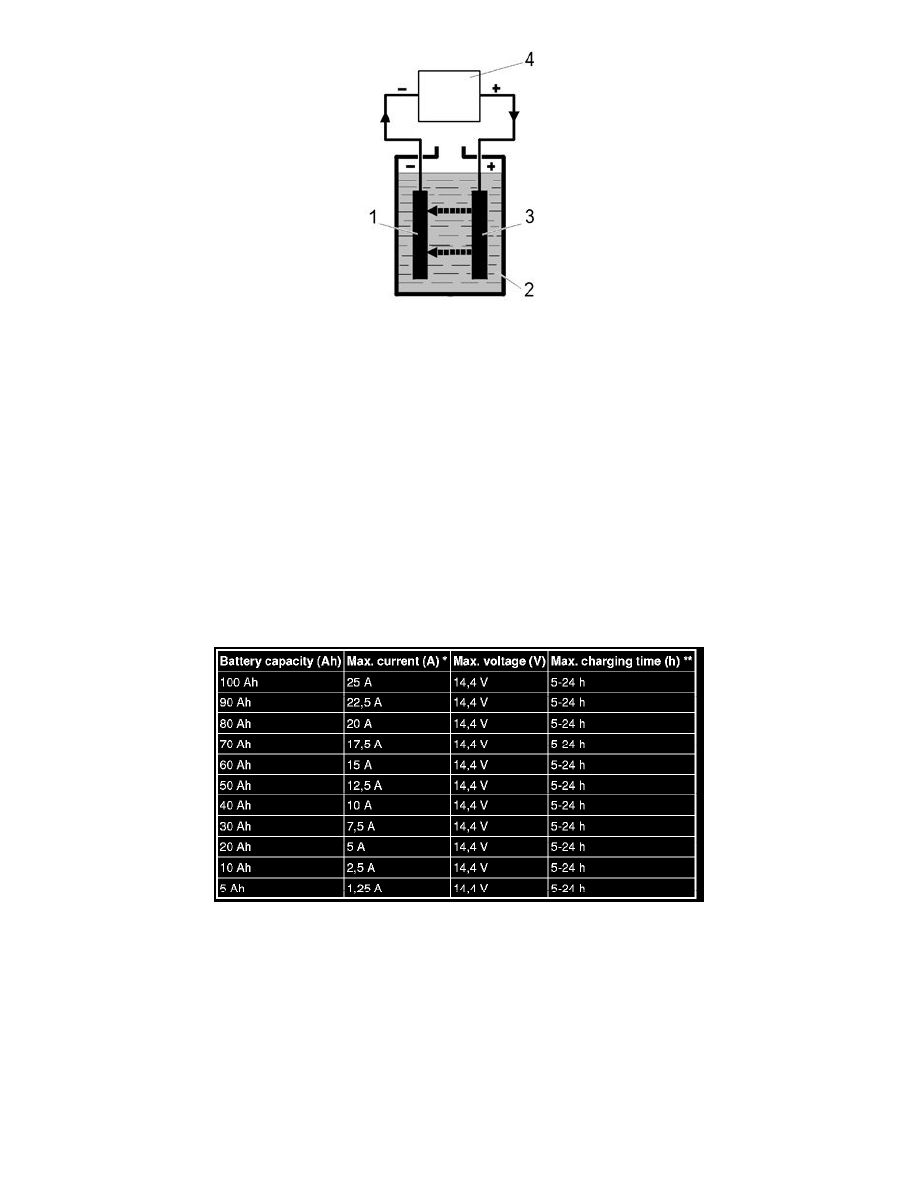V40 L4-1.9L Turbo VIN 29 B4204T3 (2002)

The process during charging
1. Negative plate: Lead sulphate is converted to pure lead
2. Electrolyte: Water is converted to sulfuric acid
3. Positive plate: Lead sulphate is converted to lead oxide
4. The power supply from the generator or the external battery charger.
During charging, energy is supplied to the battery. This causes an electro-chemical process that is the reverse of the process during discharge. The lead
sulphate (PbSO4) in the negative plate is converted back to pure porous lead (Pb) and the lead sulphate (PbSO4) in the positive plate is converted to lead
dioxide (PbO2).
Water (H2O) is consumed during the charging process. Sulfuric acid (H2SO4) is formed. The density of the electrolyte increase as the amount of sulfuric
acid increases.
Caution! For charging AGM-batteries, use only chargers that are both current and voltage-controlled. AGM-batteries are sensitive to
overcharging and must be charged with an adapted charger. This since a battery that is charged with too high voltage/current does not absorb
all the energy and the excess is converted to heat. When the battery becomes too warm the electrolyte evaporates (acid). When the pressure in
the battery becomes too high, the gas is released through the battery box safety valve. When the water volume decreases the acid concentrates
to an unacceptable high level, which may destroy the battery!
AGM-batteries may be charged with a max. voltage/current as follows.
* Max. current is calculated with the following formula (Battery capacity Ah/20)*5. For example, for a battery with capacity 70 Ah: (70/20)*5= 17.5 A.
** Charging time depends on how discharged the battery is, however, max. 24 h.
Gas build up
